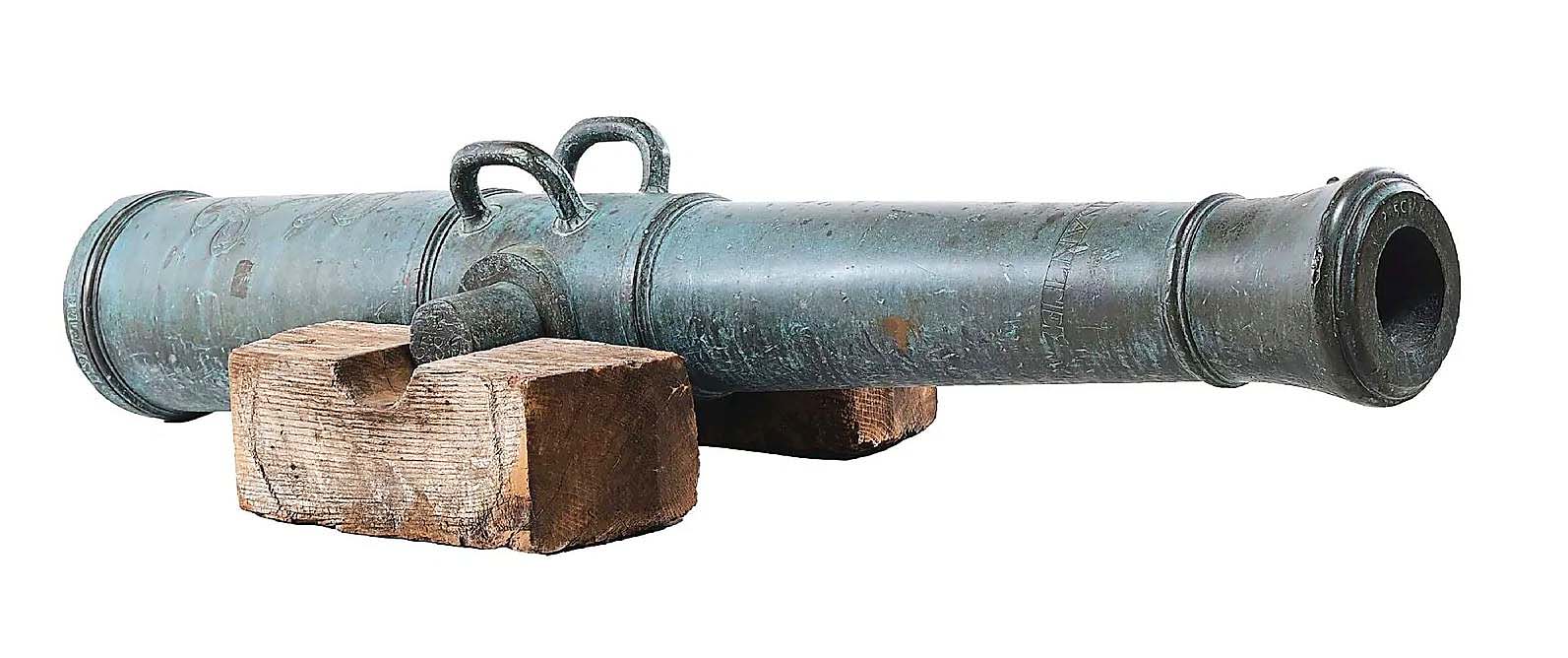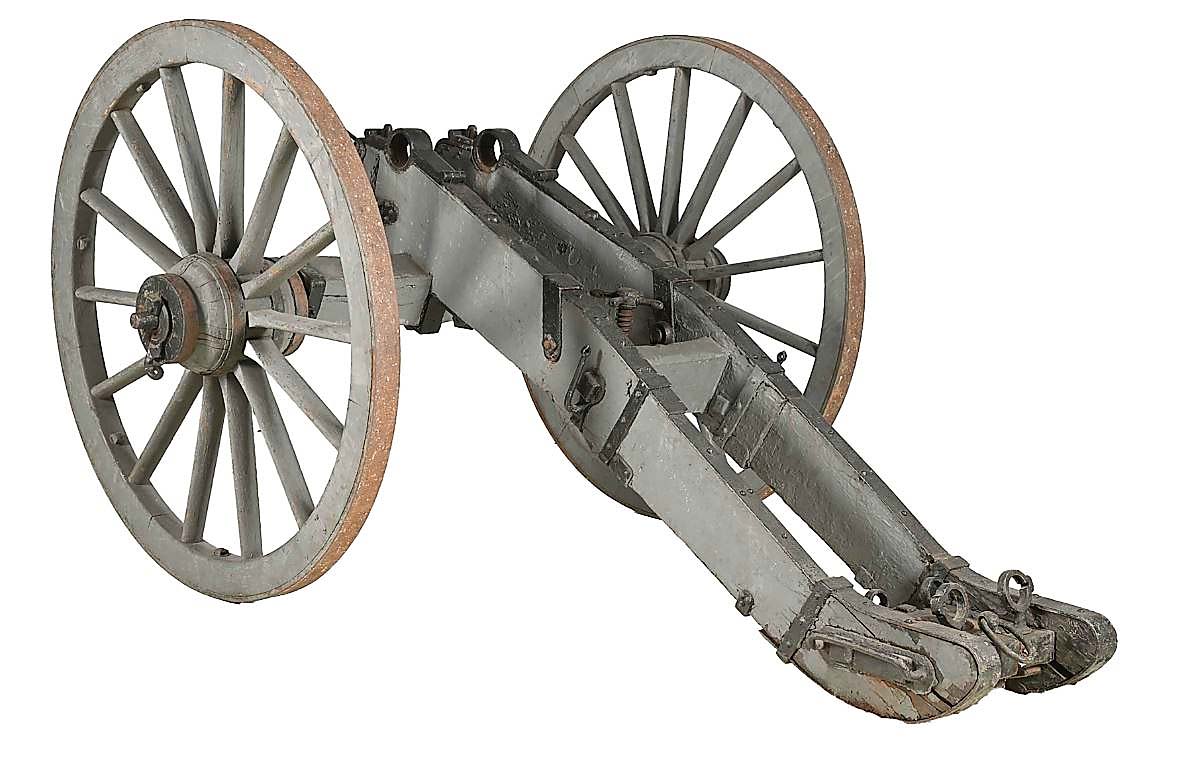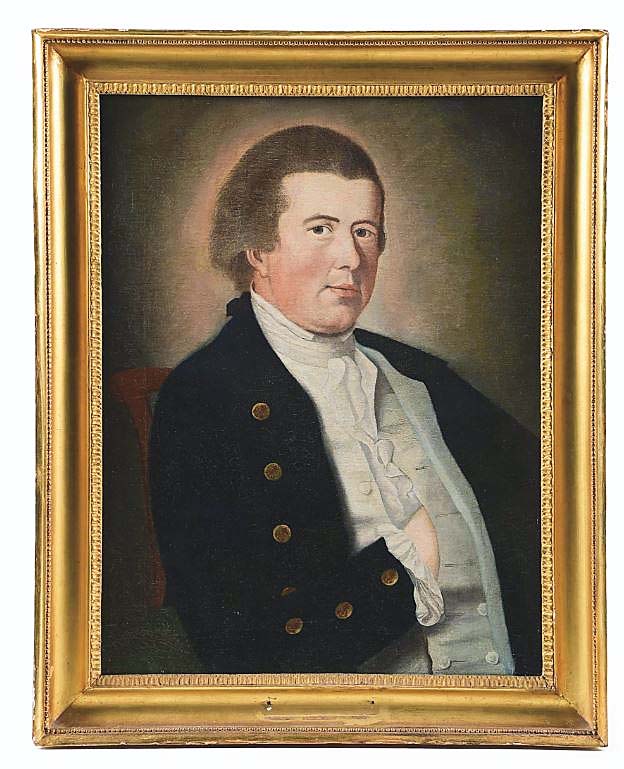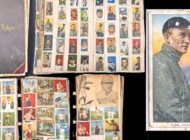
This 650-pound, 62¼-inch bronze French field cannon is one of just two known examples in a caliber that predated the French Revolution. It brought $104,550 and the highest price of the Kochan Study collection ($80/120,000).
Review by Madelia Hickman Ring
DENVER, PENN. — For 25 years, James Kochan has been a leading expert and dealer of Eighteenth and early Nineteenth Century military and naval material culture, specializing not only in arms but also manuscripts, imprints, ephemera and related artwork. With the recent decision to devote himself fully to finishing several in-progress book projects, Kochan turned to Morphy Auctions to sell his study collection, with a significant percent of the proceeds to go to museums and non-profit institutions, namely the Society of the Cincinnati’s museum and research library, The William L. Clements Library, the Fort Ligonier Association, the National Museum of the Royal Navy and The Mars and Neptune Trust. And so, 455 lots were auctioned by Morphy in the firm’s The Art of War in America, 1750-1850 auction on December 10. It was followed December 11-13 with firearms and militaria from various other sellers. When the gavel fell on the last lot, the house had realized more than $7.4 million.
Antiques and The Arts Weekly also spoke with Kochan. “It was the majority of my study collection and included all of my Revolutionary War era firearms and swords and about a third of my collection that focused on the War of 1812. My goal for selling was to get the material out there, to break even on my investment and to make sure there were proceeds available for my favorite institutions. I’m very happy with the job Morphy’s did for me and, overall, quite pleased with the results.”
A 62-inch-long French bronze Grieveaubal cannon that was dated to 1765 and is one of only two known surviving examples that predated the French Revolution was the star of the day, realizing $104,550. It was originally made to shoot four-pound cannon balls but was rebored later to shoot six-pound cannon balls. According to the catalog note, it was “possibly part of Rochambeau’s field artillery in America during the Revolutionary War.”

In the Nineteenth Century, this 1828 US Army six-pounder cannon carriage after it had been donated from a New England state arsenal to a museum, which deaccessioned it in 2023, at which point it was acquired by Kochan. It realized $14,760 ($15/30,000).
An American-built field carriage designed to carry six-pounder cannon, also of the late Gribeauval System and made at the US Washington Arsenal in 1828 closed at $14,760. According to the catalog note, it will be included in Matt Switlik’s forthcoming research on US Army field carriages.
Benjamin Hurd, Jr, (b 1749/50) in Charlestown, Mass., was the son of Benjamin Hurd (1718/19-1808) and Grace Estabrook; both were merchants but the son was a member of the Minute Company organized in Charlestown in 1774. The catalog notes that as a member of the company, he was responsible for providing himself “with a good gun and bayonet, with a iron ramrod.” A fusil or carbine that had an escutcheon inscribed “Benja / Hurd jr /1775” and buttplate inscribed “Charlestown / No. 16” and which had descended in the Hurd family brought $34,440.
A Pattern 1805 Ordnance production Baker rifle from 1815 that retained its original flintlock configuration that was not altered as many surviving examples was accompanied by a Type 2 issue sword bayonet. Both retained original sling swivels and pierced ramrod engraved “Dawes” and issue number “X/72” to identify it as one of the rifles issued to the Rifle Brigade during the Napoleonic wars. It sold for $28,980, exceeding expectations.
A handful of portraits of historically important people were included in the sale and a few brought enough to rank among the sale’s top lots. Leading the group at $27,060 was a portrait of Captain John Barry (1745-1803), who was the first officer — either military or naval — to receive a commission from the Continental Congress and has become known as the “Father of the American Navy.” The 26-by-20-inch oil on canvas portrait was attributed to Matthew Pratt (1734-1805). The imposing half-length portrait of Barry depicted him in a dark coat with brass buttons, a cream-colored waistcoat and shirt.

Captain John Barry, considered the “Father of the American Navy,” had this portrait painted around 1776, probably by Matthew Pratt. Despite some minor inpainting, it brought $27,060 ($20/40,000).
Other portraits in the sale included that of Brevet Major General Winfield Scott by Thomas Sully (1783-1877) that had descended in the Scott family until 1906 when it was sold by his granddaughter. Prior to 1950, it was acquired by Jay Altmayer and Argosy Gallery and auctioned by Christie’s in 2017, from the Jay P. Altmayer Family collection. It achieved $23,370, just ahead of the $22,140 realized for a Revolutionary War portrait of an unidentified soldier from the Third Waldeck Regiment, circa 1776.
A buff leather sword belt from the North Shore of Massachusetts had been in the lifetime collection of the late Jack Weil of Marblehead before James Kochan acquired it from a 2021 auction conducted by John McInnis. It featured an engraved belt plates that depicted a light dragoon trooper on a rearing horse and bidders pushed it to $27,060.
Described as a “superb” example of a post-1758 Highland carbine — made for the Highland regiments of the British army — retained its original iron ramrod. It sold just shy of its $25,000 high estimate, for $24,600.
Rare items on offer included a model 1808 US cutlass by Nathan Starr, which had provenance to collectors Robert F. Wheeler and Lee Bull; it traded hands for $19,200.
Prices quoted include the buyer’s premium as reported by the auction house.
Morphy Auctions will sell Firearms & Militaria May 13-15, details to be announced.
For information, 877-968-8880 or www.morphyauctions.com.
















